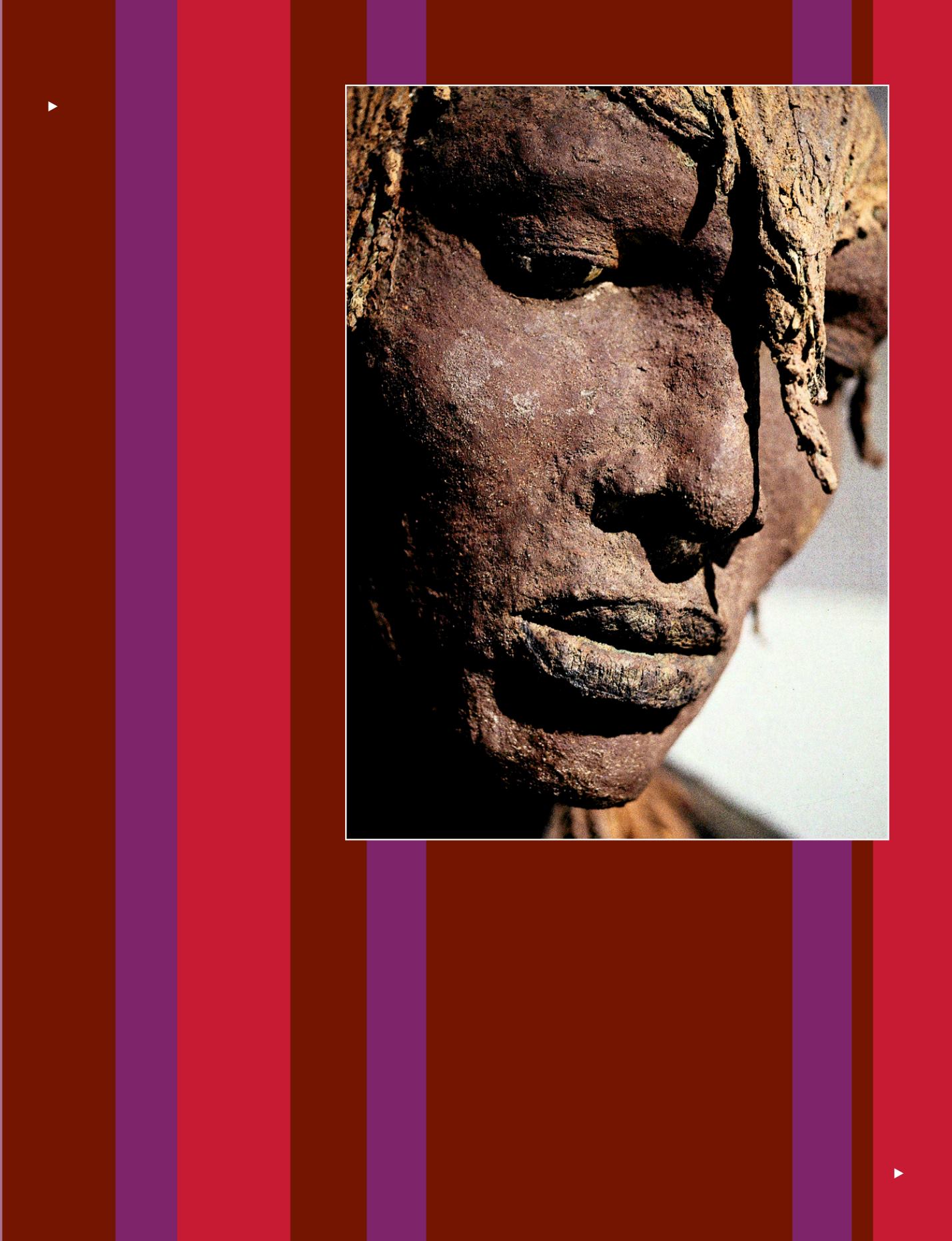
The creation of schools of art and
architecture in sub-Saharan cities
(like the famous Poto-Poto school in
Brazzaville) has encouraged artists to
use new materials such as cement, oil
paint, ink, stone and aluminium. Their
images and drawings attempt often an
astonishing synthesis of the traditions
of Africa and those of the contemporary
world. This is a renewal, in a rightful
return of audaciousness in artists
inspired by African art. Artists like
Ousmane Sow and Assane N’Noye in
Senegal, Paul Ahyi in Togo, Twins Seven
Seven and Ashira Olatunde in Nigeria and
Nicholas Mukomberanwa in Zimbabwe
are among the most remarkable with
regard to these new forms of creation.
In the Democratic Republic of the
Congo and around the Gulf of Guinea,
so-called ‘naive’ paintings depict—like
masks in villages—the characters in a
contemporary urban society in a period
of crisis: the civil servant, the policeman,
the prostitute, the fickle woman, the
soldier and the drinker. They show—in
cafés or on walls—burials, a portrait
session at the photographer’s, a dance
evening, a reconciliation scene, etc.
The Democratic Republic of the Congo
thus welcomes some of the most popular
artists in Africa like Chéri Samba, the
darling of Kinshasa, Joseph Kinkonda
and Tsibumba, while Frédéric Bruly-
Bouabre is the most famous painter
in Côte-d’Ivoire. The democratisation
enhanced by the weekly press provides
a medium for political caricature that
stems directly from this popular imagery.
New inspiration for artists
Cities receive a flood of western
packaging and machines that have
broken down for want of spare parts.
This forms possible materials for a
renewal of artistic expression, this time
at the initiative of the creator himself who
becomes a fully-fledged artist and no
longer a craftsman, albeit a skilled one,
who must obey unchanging aesthetic
canons. Steel sheet from tin cans can be
used in many ways and, from Dakar to
Brazzaville by way of Lomé and Bamako,
in the hands of children who have no other
toys, recycled wire is turned into lorries,
motorbikes, formula 1 cars, aeroplanes
and space shuttles. Better still, the
wars of ‘liberation’ and ‘aggression’
have inspired artists. Cartridge cases
from rounds fired during confrontations
between armed factions, are collected
and welded, sometimes combined with
recycled objects to give birth to a new
form of sculpture, as can be seen in the
works of Freddy Tsimba.
African artists receive awards at pan-
African and international fairs and
festivals. Likewise, the Marché des
Arts du Spectacle Africain (MASA) in
Abidjan, the Festival Panafricain du
Cinéma de Ouagadougou (FESPACO),
Dak’Art (the Biennial of Contemporary
Art), the Brazzaville–Kinshasa Festival
Panafricain de Musique (FESPAM), the
Kora in South Africa, etc. are all markets
that benefit both artists and African and
western managers.
African literature counts talented
writers of excellent books overseas or in
Africa and that dominate in kiosks and
bookshops. TheNobel Prize for Literature
has been awarded to four African writers:
Wole Soyinka, Nigeria (1956), Naguib
Mahfuz, Egypt (1988), Nadine Gordimer
and John Maxwell Coetzee, South Africa
(1993 and 2003)! The fact that several
African cultural assets are on the World
Heritage list is further proof of Africa’s
contribution to the world.
Traditional African art, and in particular
its symbolism, has fed the inspiration of
leading western artists. It inspired some
of the most important movements in
i
Ousmane Sow,
Warrior standing
, detail (1987). This artist born in Dakar (Senegal) in 1935, obtained a
diploma in physiotherapy. He made sculpture his full-time profession when he was fifty.
© Béatrice Soulé / Roger-Viollet
Identities - 19


